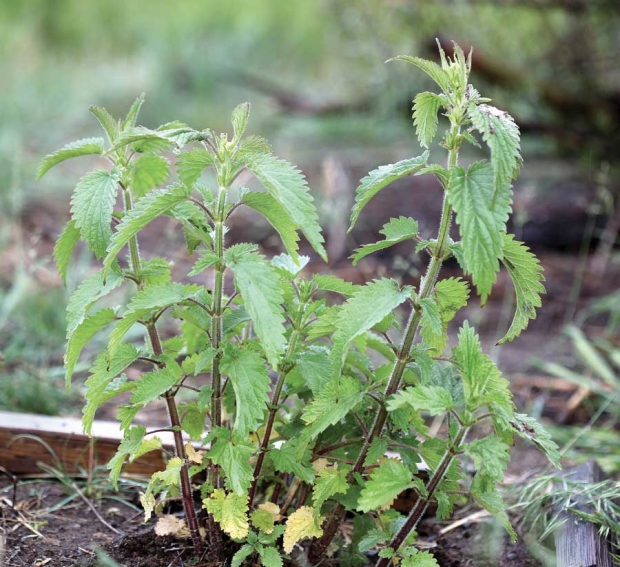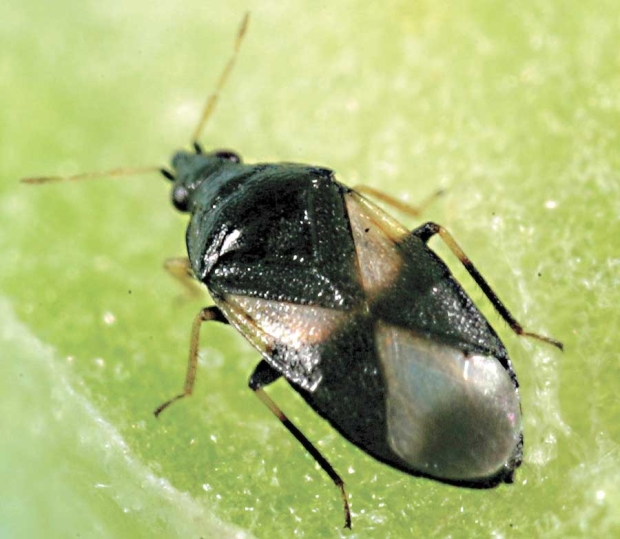
Stinging nettle is a nuisance to farmers and farmworkers because of its fine hairs that sting and irritate the skin. But don’t reach for the sprayer too quick. Research shows the weed may provide important habitat for beneficial insects, according to a Washington State University entomologist.
Common stinging nettle (Urtica dioica) is a perennial and weedy plant usually confined to moist and shaded areas. Two native subspecies of U. dioica occur in the Pacific Northwest, most commonly in wetter coastal areas.
In irrigated agriculture of central Washington it can be found near watercourses, seeps, and canals.
In Europe, common stinging nettle has been found to harbor a diversity of beneficial insects and predaceous mites and support breeding populations of several butterfly species. WSU entomologist Dr. David James, who studied stinging nettle and other plant species in Washington’s Yakima Valley for three years, found the weeds here, too, have value in biological control and conservation.
In the WSU study, James monitored beneficial insect populations in stinging nettle (U. dioica ssp. Holosericea) patches at three locations in the Yakima Valley—near Prosser, Yakima, and Benton City—using sticky traps set out from spring through autumn during 2011 to 2013.
Stinging nettle patches measured about 300 square feet in one location and 650 by 300 feet in the other two locations. Traps were attached to the upper portion of the plants from mid-May or June until mid- or early September, depending on the year, and were left in place for about two weeks before replacement with new traps.

What was caught?
Large numbers of beneficial insects (200 to 400 per trap) were caught at all three sites in all years. In each year, the greatest numbers of beneficial insects were trapped in early June and early July—around the same time that stinging nettle begins blooming in central Washington—and gradually declined thereafter, James reported.
Many of the attracted beneficial insects may have been seeking nectar and/or pollen from nettle flowers, he explained.
Beneficial insects trapped were grouped into ten categories:
—Lacewings
—Ladybird beetles
—Predatory true bugs
—Predatory thrips
—Predaceous flies
—Ichneumonid and braconid wasps
—Anagrus wasps
—Coccophagus and Metaphycus wasps
—Other parasitic wasps
—Native bees
Predatory bugs and predaceous flies, parasitic wasps, and native bees dominated the trapped beneficial insects in 2011, according to James. In the second and third years, significantly more predatory bugs, predaceous flies and parasitic wasps were trapped than other categories.
In two of the three years, the most abundant category of the beneficial species was predatory bugs. Minute pirate bugs accounted for around 95 percent of trapped predatory bugs. Very few honeybees were trapped.
The research showed that aphids and leafhoppers, which occurred in much lower numbers (less than 20 per trap), also use stinging nettle as a resource.
While the nettle patches used in James’ study were relatively large, they were separated from other nettle patches by about a mile. Research in Germany has shown that the diversity and abundance of predatory insects was reduced in isolated nettle patches.
James believes that the diversity and numbers of beneficial insects in central Washington may be even greater if patches are part of a mosaic with relatively small distances separating them, an aspect he says warrants further study.
James says grape growers in Washington have made great strides in using biological control and conservation to manage insects and mites.
The state’s wine industry is interested in enhancing habitat restoration using native plants that attract and harbor predators and parasitoids. With help from wine industry funding, James investigated the attraction of native plant species near vineyards to beneficial insects. His work resulted in a list of the top native plants that have potential as ground cover or refugia plants in vineyards in eastern Washington (see “Native plants attract beneficial insects,” Good Fruit Grower, August 2014).
“Based on the evidence of this study, stinging nettle (U. dioica) appears to be a good candidate for inclusion in vineyard habitat restoration,” he said. “It has potential to help in pest management not only in grapes but other crops as well. It is clearly an important reservoir of biological control agents and should be incorporated in landscape planning aimed at enhancing pest control.”
James, who has studied and published books about butterfly conservation, found that stinging nettle is host to five butterfly species in central Washington.
“Stinging nettle would be extremely helpful to butterfly conservation,” he said. “I would definitely recommend stinging nettle as a garden plant if you want to see butterflies and improve pest control at the same time.” •






What is the active ingredients of nettle that prevent the bugs and other pest ?